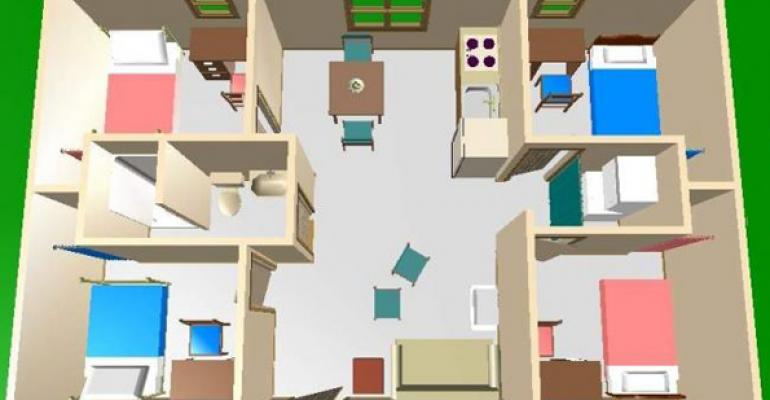The rush to buy student housing continues.
“A property will come up for sale, if it’s halfway attractive, you will have a whole line of bidders,” says Jim Arbury, vice president for student housing with the National Multifamily Housing Council (NMHC), an industry organization. “It’s a seller’s market.”
Investors are pouring money into the student housing business as new buyers enter the market. In 2014, these new buyers filled in for the largest real estate investment trusts (REITs), which were temporarily not buying properties after some bad earnings news hurt their stock prices. Now in 2015, the REITs have returned, driving property prices for student housing even higher. Prices for student housing are starting to look high even compared to prices for apartment properties overall, relative to the income from these assets.
“REITs are actively looking to acquire that core, pedestrian-to-campus product,” says Ryan Lang, head of the student housing division at ARA Newmark, an investment advisory firm that focuses on multi-housing properties. That’s a big change from 2014, when the top student housing REITs, EdR and American Campus Communities, bought just a handful of properties, accounting for just 3 percent of transactions.
A long list of new investors have also joined the bidding for student housing assets, including high-net worth individuals, private equity fund managers and institutional investors. “There have been a flood of new entrants into the space,” says Lang.
Cap rates in the sector averaged just 6.1 percent in the first quarter, according to data firm Real Capital Analytics (RCA). That’s down from 6.6 percent the year before. Cap rates have been at 6.1 percent for the last three quarters, the lowest level since the financial crisis.
Lower risk premiums
Investors used to pay less for student housing properties than they did for apartment buildings relative to the income from the properties. But that risk premium is eroding. The average cap rate of 6.1 percent recorded for student housing properties in the first quarter is just 20 basis points higher than the 5.9 percent average cap rate that investors paid for multifamily properties overall, according to RCA.
Other data firms show similar results. Cap rates for student housing properties were 6.2 percent on average in 2014, 60 basis points lower than the year before, according to ARA Newmark. That’s only 15 to 20 basis points higher than the average cap rate for apartment properties.
“There’s traditionally been a 50 basis point spread between cap rates for multifamily housing overall and student housing,” says Lang. The total number of transactions grew slightly and the average sales price per bed also grew by about $3,000, from $48,000 on average in 2013 to $51,000 in 2014.
Student housing looks less risky to investors as enrollment continues to grow at top-tier universities served by student housing properties, according to Arbury. Developers are on track to open new student housing communities at a rate of 40,000 to 50,000 new beds a year over the next two years—about in line with the demand for new student housing.
“You are not going to get overbuilt with that,” says Arbury.

